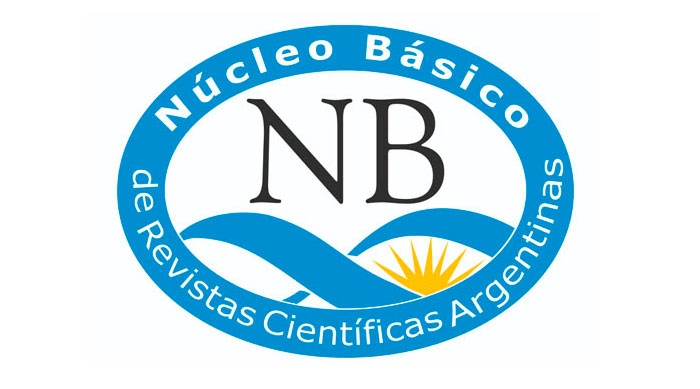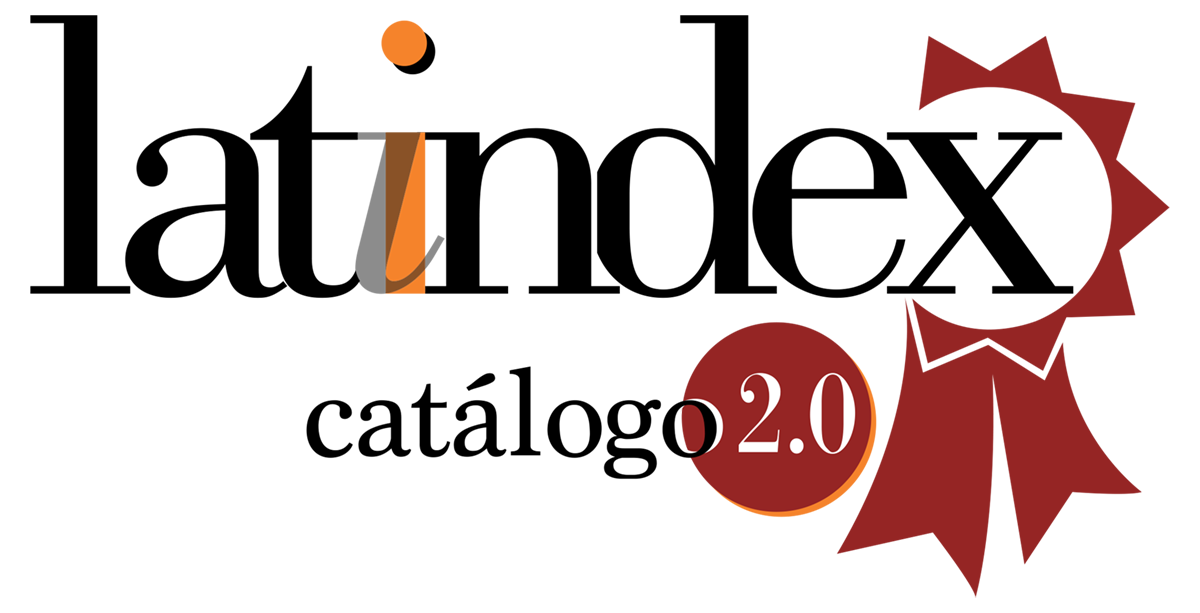Estimación del espesor cortical para la provincia de Santiago del Estero a partir de datos satelitales
Palabras clave:
Parker-Oldenburg, Anomalía de Bouguer, Santiago del Estero, espesor cortical, inversión gravimétricaResumen
El campo de gravedad terrestre provee información de las variaciones de densidad en el interior de la Tierra, proporcionando una restricción esencial en el desarrollo de modelos de corteza. El objetivo de este trabajo consistió en determinar el espesor cortical para la provincia de Santiago del Estero, Argentina, mediante inversión gravimétrica de anomalías de Bouguer de fuentes satelitales. Para ello se aplicó el método iterativo de Parker-Oldenburg, considerando un modelo de dos capas, con contraste de densidad constante, restringido con datos del espectro de densidad de potencia de las anomalías gravitatorias y antecedentes geofísicos. La geometría de la interfaz corteza-manto se obtuvo de forma iterativa. Para analizar la singularidad de los valores obtenidos del espesor de la corteza, se variaron los parámetros de entrada en un rango acorde a los valores disponibles en la literatura. El modelo de mejor ajuste resultó con un valor cuadrático medio (RMS) de 0.0157 km en la topografía invertida y un error cuadrático medio (ECM) de 4.51 mGal en la diferencia entre la gravedad inicial y la calculada. El modelo de corteza 3D obtenido revela una profundidad cortical adelgazada, que varía en general, entre 39 km al NW y 35 km al SE, con un gradiente negativo orientado predominantemente en dirección NW-SE. Para robustecer el modelo determinado se lo comparó con modelos corticales disponibles en la literatura. La contrastación mostró el mejor ajuste con el modelo 3D-Earth, con una desviación estándar de ± 1,11 km y un RMS de ± 2,11 km.
Descargas
Citas
Amante, C. & Eakins, B. W. (2009). ETOPO1 Global Relief Model converted to Pan Map layer format. https://doi.org/10.1594/PANGAEA.769615
Anderson, D. L. (1989). Theory of the Earth. Blackwell Scientific Publications.
Arecco, M. A., Ruiz, F., Pizarro, G., Giménez, M. E., Martı́nez, M. P., & Ramos, V. (2016). Gravimetric determination of the continental–oceanic boundary of the Argentine continental margin (from 36°s to 50°s). Geophysical Journal International, 204, 366–385. https://doi.org/10.1093/gji/ggv433
Assumpção, M., Feng, M., Tassara, A., & Julia, J. (2013). Models of crustal thickness for South America from seismic refraction, receiver functions and surface wave tomography. Tectonophysics, 609, 82–96. https://doi.org/10.1016/j.tecto.2012.11.014
Barzaghi, R., Reguzzoni, M., Borghi, A., De Gaetani, C., Sampietro, D., & Marotta, M. A. (2015). Global to local moho estimate based on GOCE geopotential model and local gravity data. International Association of Geodesy Symposia. Springer International Publishing Switzerland. https://doi.org/10.1007/1345_2015_15
Bessoni, T. P., Bassrei, A., & Oliveira, L. G. S. D. (2020). Inversion of satellite gravimetric data from Recôncavo-Tucano-Jatobá basin system. Brazilian Journal of Geology, 50. https://doi.org/0.1590/2317-488920202020190113
Blakely, R. J. (1996). Potential theory in gravity and magnetic applications. Cambridge University Press. https://doi.org/10.1017/CBO9780511549816
Dragone, G., Ussami, N., & Chaves, C. (2012). The Chaco-Paraná Basin from GOCE and integrated terrestrial/satellite gravity data: unraveling major lithosphere discontinuities. International Symposium on Gravity, Geoid and Height Systems, GGHS.
Flechtner, F., Morton, P., Watkins, M., & Webb, F. (2014). Status of the GRACE follow-on mission. Gravity, Geoid and Height Systems: Proceedings of the IAG Symposium GGHS2012, October 9-12, 2012, Venice, Italy, 117–121. https://doi.org/10.1007/978-3-319-10837-7_15
Foerste, C., Bruinsma, S. L., Abrykosov, O., Lemoine, J.-M., Marty, J. C., Flechtner, F., Balmino, G., Barthelmes, F., & Biancale, R. (2014). EIGEN-6C4: The latest combined global gravity field model including GOCE data up to degree and order 2190 of GFZ Potsdam and GRGS Toulouse. GFZ Data Services. https://doi.org/10.5880/icgem.2015.1
Gómez Ortiz, D. (2001). La estructura de la corteza en la zona central de la Penı́nsula Ibérica. Tesis doctoral. Universidad Complutense de Madrid. https://hdl.handle.net/20.500.14352/56122
Gómez Ortiz, D. & Agarwal, B. N. P. (2005). 3DINVER.M: a MATLAB program to invert the gravity anomaly over a 3D horizontal density interface by Parker-Oldenburg’s algorithm. Computers & Geosciences, 31(4), 513–520. https: //doi.org/10.1016/j.cageo.2004.11.004
Heiskanen, W. (1953). The geophysical applications of gravity anomalies. Eos Trans Am Geophys Union, 34(1), 11–15. https://doi.org/10.1029/TR034i001p00011
Ince, E. S., Barthelmes, F., Reißland, S., Elger, K., Förste, C., Flechtner, F., & Schuh, H. (2019). ICGEM – 15 years of successful collection and distribution of global gravitational models, associated services and future plans. Earth System Science Data, 11, 647–674. https://doi.org/10.5194/essd-11-647-2019
Infante, C. (2023). Caracterización del Espesor Cortical a partir de interpretación gravimétrica en la provincia de Santiago del Estero. Tesis doctoral. Universidad Nacional de Catamarca.
Infante, C., Tocho, C., & Arecco, M. A. (2021). Modelo preliminar del Moho para Santiago del Estero a partir de datos satelitales. XXIX Reunión Cientı́fica de la Asociación Argentina de Geodestas y Geofı́sicos. Libro de resúmenes, ISBN 978-987-25291-4-7.
Introcaso, A. (1997). Gravimetrı́a. Universidad Nacional de Rosario Editora.
Introcaso, A. (2003). Significativa descompensación isostática en la cuenca del colorado (República Argentina). Revista de la Asociación Geológica Argentina, 58(3), 474–478.
Laske, G., Ma, Z., Masters, G., & Pasyanos, M. (2013). CRUST 1.0. a new global crustal model at 1x1 degrees. https://igppweb.ucsd.edu/~gabi/crust1.html
Lefort, J. P. & Agarwal, B. N. P. (2000). Gravity and geomorphological evidence for a large crustal bulge cutting across Brittany (France): a tectonic response to the closure of the Bay of Biscay. Tectonophysics, 323(3-4), 149–162. https://doi.org/10.1016/S0040-1951(00)00103-7
Liang, W., Li, J., Xu, X., Zhang, S., & Zhao, Y. (2020). A high-resolution Earth’s gravity field model SGG-UGM-2 from GOCE, GRACE, satellite altimetry, and EGM2008. Engineering, 6(8), 860–878. https://doi.org/10.1016/j.eng.2020.05.008
Mooney, W. D., Laske, G., & Masters, T. G. (1998). CRUST 5.1: A global crustal model at 5x5°. Journal of Geophysical Research, 103(B1), 727–747. https://doi.org/10.1029/97JB02122
Nagendra, R., Prasad, P. V. S., & Bhimasankaram, V. L. S. (1996). Forward and inverse computer modeling of a gravity field resulting from a density interface using Parker-Oldenburg method. Computers & Geosciences, 22(3). https://doi.org/10.1016/0098
Oldenburg, D. W. (1974). The inversion and interpretation of gravity anomalies. Geophysics, 39(4), 526–536. https://doi.org/10.1190/1.1440444
Parker, R. L. (1973). The rapid calculation of potential anomalies. Geophysical Journal International, 31(4), 447–455. https://doi.org/10.1111/j.1365-246X.1973.tb06513.x
Pavlis, N. K., Holmes, S. A., Kenyon, S. C., & Factor, J. K. (2012). The development and evaluation of the Earth Gravitational Model 2008 (EGM2008). Journal of Geophysical Research: Solid Earth, 117(B4). https://doi.org/10.1029/2011JB008916
Peri, V. G. (2012). Caracterización morfotectónica de las Lomadas de Otumpa (Gran Chaco, Santiago del Estero y Chaco): Influencias en el control del drenaje. Facultad de Ciencias Exactas y Naturales, Universidad de Buenos Aires. https://bibliotecadigital.exactas.uba.ar/download/tesis/tesis_n5110_Peri.pdf
Peri, V. G. & Rossello, E. (2010). Anomalı́as morfoestructurales del drenaje del rı́o Salado sobre las Lomadas de Otumpa (Santiago del Estero y Chaco) detectadas por procesamiento digital. Revista de la Asociación Geológica Argentina, 66(4), 636–648.
Priadi, R., Fatmasari, N., & Intansari, N. H. (2019). The use of gravity anomaly data to estimate the depth of Mohorovicic discontinuity in Bali area used power spectral analysis. Journal of Physics: Conference Series, volumen 1171. https://doi.org/10.1088/1742-6596/1171/1/012007
Ramos, V. A. & Folguera, A. (2009). Andean flat-slab subduction through time. Geological Society, London, Special Publications, 327(1), 31–54. https://doi.org/10.1144/SP327.3
Ramé, G. & Miró, R. (2011). Modelo geofı́sico de contacto entre el Orógeno Pampeano y el Cratón del Rı́o de La Plata en las provincias de Córdoba y Santiago del Estero. Serie Correlación Geológica, 27(2), 111–123. https://www.insugeo.org.ar/scg/ver-autor.php?id=96. Temas de Correlación Geológica II (1), Tucumán
Reguzzoni, M. & Sampietro, D. (2015). GEMMA: An Earth crustal model based on GOCE satellite data. International Journal of Applied Earth Observation and Geoinformation, 35(Part A), 31–43. https://doi.org/10.1016/j.jag.2014.04.002
Reigber, C., Balmino, R., Schwintzer, P., Biancale, R., Bode, A., Lemoine, J. M., König, R., Loyer, S., Neumayer, H., Marty, J., Barthelmes, F., Perosanz, F., & Zhu, S. Y. (2002a). A high-quality global gravity field model from CHAMP GPS tracking data and accelerometry (EIGEN-1S). Geophysical Research Letters, 29(14), 37–1. https://doi.org/10.1029/2002GL015064
Reigber, C., Lühr, H., & Schwintzer, P. (2002b). CHAMP mission status. Advances in Space Research, 30(2), 129–134. https://doi.org/10.1016/S0273-1177(02)00276-4
Rosa, M. L., Collaço, B., Assumpção, M., Sabbione, N., & Sánchez, G. (2016). Thin crust beneath the Chaco-Paraná Basin by surface-wave tomography. Journal of South American Earth Sciences, 66, 1–14. https://doi.org/10.1016/j.jsames.2015.11.010
Rummel, R., Yi, W., & Stummer, C. (2011). GOCE gravitational gradiometry. Journal of Geodesy, 85(11), 777–790. https://doi.org/10.1007/s00190-011-0500-0
Spector, A. & Granti, F. S. (1970). Statistical models for interpreting aeromagnetic data. Geophysical Prospecting, 20, 633–649. https://doi.org/10.1190/1.1440092
Syberg, F. J. R. (1972). A Fourier method for the regional-residual problem of potential fields. Geophysical Prospecting, 20, 47–75. https://doi.org/10.1111/j.1365-2478.1972.tb00619.x
Szwillus, W., Afonso, J. C., Ebbing, J., & Mooney, W. (2019). Global crustal thickness and velocity structure from geostatistical analysis of seismic data. Journal of Geophysical Research: Solid Earth, 124, 1626–1652. https://doi.org/10.1029/2018JB016593
Talwani, M. & Ewing, M. (1960). Rapid computation of gravitational attraction of three-dimensional bodies of arbitrary shape. Geophysics, 25(1), 203–225. https://doi.org/10.1190/1.1438687
Talwani, M., Worzel, J. L., & Landisman, M. (1959). Rapid gravity computations for two-dimensional bodies with application to the Mendocino submarine fracture zone. Journal of Geophysical Research, 64(1), 49–59. https://doi.org/10.1029/JZ064i001p00049
Tapley, B. D., Bettadpur, S., Watkins, M., & Reigber, C. (2004). The gravity recovery and climate experiment: mission overview and early results. Geophysical Research Letters, 31(9), L09607. https://doi.org/10.1029/2004GL019920
Trung, N., Hong, P. T., Van Nam, B., Huong, N. T., & Lap, T. T. (2018). Moho depth of the northern Vietnam and Gulf of Tonkin from 3D inverse interpretation of gravity anomaly data. Journal of Geophysics and Engineering, 15(4), 1651–1662. https://doi.org/10.1088/1742-2140/aabf48
Tziavos, I., Vergos, G. S., Grigoriadis, V. N., & Stylianidis, S. (2017). Geoid and Moho-depth modeling in Cyprus. Joint Scientific Assembly of the IAG and the IASPEI, Session G02 “Static Gravity Field”.
van der Meijde, M., Julia, J., & Assumpção, M. (2013). Gravity derived Moho for South America. Tectonophysics, 609, 45–56. https://doi.org/10.1016/j.tecto.2013.03.023
Descargas
Publicado
Cómo citar
Número
Sección
Licencia
Derechos de autor 2024 Claudia L. Infante, Claudia N. Tocho, María Alejandra Arecco

Esta obra está bajo una licencia internacional Creative Commons Atribución-NoComercial-CompartirIgual 4.0.
A partir de 2022 (Vol. 43 número 2) los artículos se publicarán en la revista bajo una licencia Creative Commons Atribución- NoComercial-CompartirIgual 4.0 Internacional (CC BY-NC-SA 4.0)
Acorde a estos términos, el material se puede compartir (copiar y redistribuir en cualquier medio o formato) y adaptar (remezclar, transformar y crear a partir del material otra obra), siempre que a) se cite la autoría y la fuente original de su publicación (revista y URL de la obra), b) no se use para fines comerciales y c) se mantengan los mismos términos de la licencia.
Previo a esta fecha los artículos se publicaron en la revista bajo una licencia Creative Commons Atribución (CC BY)
En ambos casos, la aceptación de los originales por parte de la revista implica la cesión no exclusiva de los derechos patrimoniales de los/as autores/as en favor del editor, quien permite la reutilización, luego de su edición (posprint), bajo la licencia que corresponda según la edición.
Tal cesión supone, por un lado, que luego de su edición (posprint) en Revista GEOACTA de la Asociación de Geofísicos y Geodestas las/os autoras/es pueden publicar su trabajo en cualquier idioma, medio y formato (en tales casos, se solicita que se consigne que el material fue publicado originalmente en esta revista); por otro, la autorización de los/as autores/as para que el trabajo sea cosechado por SEDICI, el repositorio institucional de la Universidad Nacional de La Plata, y sea difundido en las bases de datos que el equipo editorial considere adecuadas para incrementar la visibilidad de la publicación y de sus autores/as.
Asimismo, la revista incentiva a las/os autoras/es para que luego de su publicación en Revista de la Asociación de Geofísicos y Geodestas depositen sus producciones en otros repositorios institucionales y temáticos, bajo el principio de que ofrecer a la sociedad la producción científica y académica sin restricciones contribuye a un mayor intercambio del conocimiento global.












